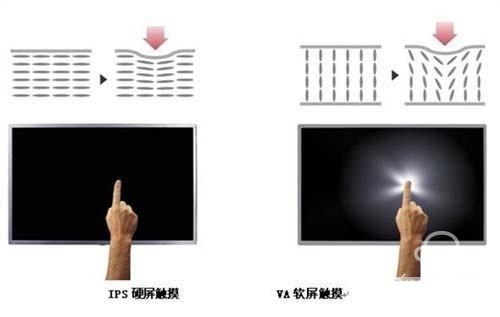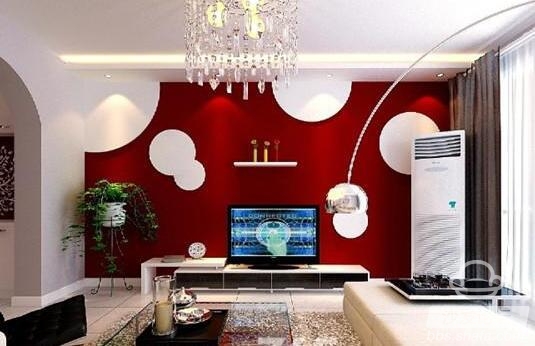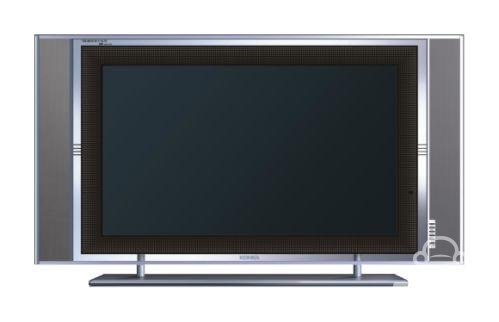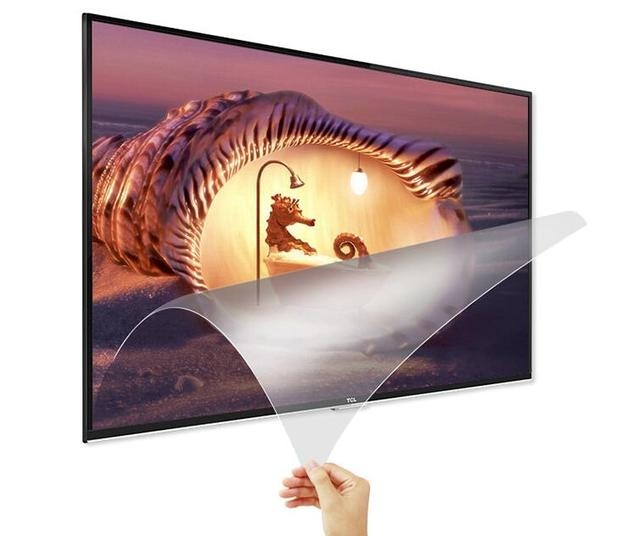With the development of televisions, there are more and more TV models and materials, but for many owners who want to buy TVs, it is a difficult problem for TV hard screens and soft screens to be selected. Some salesmen Say hard screen is good, some say soft screen is good, what is the difference between TV hard screen and soft screen? Which hard screen and soft screen is better? We know the following:

The difference between hard screen and soft screen of TV:
1, IPS (hard screen)
IPS technology (In-PlaneSwitching, plane conversion) is Hitachi's LCD technology introduced in 2001, commonly known as "SuperTFT". IPS camp led by Hitachi, gathered LGD, Haoyu Caijing and other manufacturers.
The most important feature of this technology is that its two poles are on the same plane, unlike other liquid crystal mode electrodes, which are arranged on top and bottom. Since the electrodes are on the same plane, the liquid crystal molecules are always parallel to the screen regardless of the state, which will reduce the aperture ratio and reduce the light transmittance. Therefore, the IPS application on the LCD TV will require more lamps, and in certain situations To the extent, power consumption will also be greater.
The advantages of the IPS screen are high viewing angle, fast response, and accurate color reproduction. Compared with other types of screens, the screen of IPS screens is relatively "hard." It is not easy for water-pattern distortion to appear when you use your hand to scratch it, so it is also called a hard screen. The disadvantage of the IPS screen is that the light leakage problem is relatively serious, the purity of the black is not enough, and the contrast is slightly inferior to the PVA, so it is necessary to rely on the compensation of the optical film to achieve a better black color.

2, VA (soft screen)
Fujitsu's MVA technology (Multi-domain Vertical Alignment) can be said to be the earliest wide-angle LCD technology. This type of screen can provide a larger viewing angle, usually up to 170°. The improved viewing angle of the P-MVA screen can reach 178°, which is close to the current consumer demand for viewing at home, and the response time can reach 8ms or less.
Samsung's PVA technology (Patterned Vertical Alignment) also belongs to the category of VA technology. It is the successor and developer of MVA technology. The improved S-PVA can already be used in parallel with P-MVA. PVA uses a transparent ITO electrode instead of the protrusions of the liquid crystal layer in the MVA, and the transparent electrode can obtain a better aperture ratio and minimize the waste of the backlight source.

VA wide viewing angle technology, due to its strong production capacity and stable quality control system, is widely used in high-end liquid crystal displays or LCD TVs. The VA screen belongs to a soft screen, and a similar pattern of water can be seen by gently tapping it.
The so-called hard-screen product is a layer of transparent resin material that protects the outer film on the LCD screen. The hard-screen process was initially promoted by Hitachi and other Japanese manufacturers. Later, LG significantly improved the technology, resulting in a very unique S-IPS hard screen process technology. The prominent feature of the hard screen is that the screen has a certain degree of stability. Gently prying it with your fingers will not show any obvious shadows, which is good for screen protection, but the sticking process must be good enough. The main representative of hard screen manufacturers is LG-Philips, LCD TVs such as LG, Toshiba, Hitachi and other manufacturers mostly use hard screen.
 3, the difference between hard screen and soft screen
3, the difference between hard screen and soft screen
Hard screens and soft screens are for LCD TVs. Physically, the surface of soft screens is relatively soft. There will be water ripples when you touch them by hand. The hard screen surface is harder. This phenomenon.
Although hard screens and soft screens have certain differences in the production process, there are no absolute advantages or disadvantages in performance. The former has poor light leakage, while the latter sees color distortion. However, both hard-screen and soft-screen manufacturers have gradually improved their respective shortcomings. There is no absolute difference in the world. The hard-screen is good and the soft-screen difference is paradoxical in the modern nature of information flow. broken.
 There is no obvious difference in the quality of the hard screen transmission performance and the soft screen. The protection screen of the hard screen does not cause poor transmission, and the film and screen bonding process requirements are also very good. Without a protective soft screen, as long as the consumer is careful when using, do not use gravity or sharp objects to scratch, generally not easy to scratch.
There is no obvious difference in the quality of the hard screen transmission performance and the soft screen. The protection screen of the hard screen does not cause poor transmission, and the film and screen bonding process requirements are also very good. Without a protective soft screen, as long as the consumer is careful when using, do not use gravity or sharp objects to scratch, generally not easy to scratch.

Hard screen and soft screen which is better?
As for the material of LCD screens, hard screens and soft screens are similar to the physical structure of liquid crystals, and their basic performance is the same. The hard screen with a layer of protective film seems to have improved safety, but it will still not surpass the vulnerability of LCD screens. Physical defects. Therefore, whether it is a hard-screen LCD TV or a soft-screen LCD TV, it is equally fearful of collision. It also requires careful protection. When the user is in use, the screen will not be damaged as long as it does not use gravity or sculpt with sharp objects.
Reasons to choose a hard screen:
The reason for choosing a hard screen is very simple. Behind the LCD screen is a layer of liquid crystalline material, which is delicate and lacks protection. Any inadvertent impact or scratching may damage the screen. It is clear that the hard is better than the soft one.
Reason for choosing soft screen:
 People who think that soft screens are good are not a few. The so-called hard screens are actually a layer of transparent resinous material outside the LCD screen to protect the outer film. Its technical requirements are very high. Once the outer film and the screen are pasted, Careful, repeated thermal expansion and contraction after starting will cause imaging distortion and affect the quality. If the light protection performance of the outer screen protection film is not good, it may also affect the color effect of the screen.
People who think that soft screens are good are not a few. The so-called hard screens are actually a layer of transparent resinous material outside the LCD screen to protect the outer film. Its technical requirements are very high. Once the outer film and the screen are pasted, Careful, repeated thermal expansion and contraction after starting will cause imaging distortion and affect the quality. If the light protection performance of the outer screen protection film is not good, it may also affect the color effect of the screen.
The above is what Xiaobian wants to share with everyone on the difference between hard and soft screens, hard screens, and soft screens. I hope everyone can help. For more information, please continue to pay attention to us.

The difference between hard screen and soft screen of TV:
1, IPS (hard screen)
IPS technology (In-PlaneSwitching, plane conversion) is Hitachi's LCD technology introduced in 2001, commonly known as "SuperTFT". IPS camp led by Hitachi, gathered LGD, Haoyu Caijing and other manufacturers.
The most important feature of this technology is that its two poles are on the same plane, unlike other liquid crystal mode electrodes, which are arranged on top and bottom. Since the electrodes are on the same plane, the liquid crystal molecules are always parallel to the screen regardless of the state, which will reduce the aperture ratio and reduce the light transmittance. Therefore, the IPS application on the LCD TV will require more lamps, and in certain situations To the extent, power consumption will also be greater.
The advantages of the IPS screen are high viewing angle, fast response, and accurate color reproduction. Compared with other types of screens, the screen of IPS screens is relatively "hard." It is not easy for water-pattern distortion to appear when you use your hand to scratch it, so it is also called a hard screen. The disadvantage of the IPS screen is that the light leakage problem is relatively serious, the purity of the black is not enough, and the contrast is slightly inferior to the PVA, so it is necessary to rely on the compensation of the optical film to achieve a better black color.

2, VA (soft screen)
Fujitsu's MVA technology (Multi-domain Vertical Alignment) can be said to be the earliest wide-angle LCD technology. This type of screen can provide a larger viewing angle, usually up to 170°. The improved viewing angle of the P-MVA screen can reach 178°, which is close to the current consumer demand for viewing at home, and the response time can reach 8ms or less.
Samsung's PVA technology (Patterned Vertical Alignment) also belongs to the category of VA technology. It is the successor and developer of MVA technology. The improved S-PVA can already be used in parallel with P-MVA. PVA uses a transparent ITO electrode instead of the protrusions of the liquid crystal layer in the MVA, and the transparent electrode can obtain a better aperture ratio and minimize the waste of the backlight source.

VA wide viewing angle technology, due to its strong production capacity and stable quality control system, is widely used in high-end liquid crystal displays or LCD TVs. The VA screen belongs to a soft screen, and a similar pattern of water can be seen by gently tapping it.
The so-called hard-screen product is a layer of transparent resin material that protects the outer film on the LCD screen. The hard-screen process was initially promoted by Hitachi and other Japanese manufacturers. Later, LG significantly improved the technology, resulting in a very unique S-IPS hard screen process technology. The prominent feature of the hard screen is that the screen has a certain degree of stability. Gently prying it with your fingers will not show any obvious shadows, which is good for screen protection, but the sticking process must be good enough. The main representative of hard screen manufacturers is LG-Philips, LCD TVs such as LG, Toshiba, Hitachi and other manufacturers mostly use hard screen.

Hard screens and soft screens are for LCD TVs. Physically, the surface of soft screens is relatively soft. There will be water ripples when you touch them by hand. The hard screen surface is harder. This phenomenon.
Although hard screens and soft screens have certain differences in the production process, there are no absolute advantages or disadvantages in performance. The former has poor light leakage, while the latter sees color distortion. However, both hard-screen and soft-screen manufacturers have gradually improved their respective shortcomings. There is no absolute difference in the world. The hard-screen is good and the soft-screen difference is paradoxical in the modern nature of information flow. broken.


Hard screen and soft screen which is better?
As for the material of LCD screens, hard screens and soft screens are similar to the physical structure of liquid crystals, and their basic performance is the same. The hard screen with a layer of protective film seems to have improved safety, but it will still not surpass the vulnerability of LCD screens. Physical defects. Therefore, whether it is a hard-screen LCD TV or a soft-screen LCD TV, it is equally fearful of collision. It also requires careful protection. When the user is in use, the screen will not be damaged as long as it does not use gravity or sculpt with sharp objects.
Reasons to choose a hard screen:
The reason for choosing a hard screen is very simple. Behind the LCD screen is a layer of liquid crystalline material, which is delicate and lacks protection. Any inadvertent impact or scratching may damage the screen. It is clear that the hard is better than the soft one.
Reason for choosing soft screen:

The above is what Xiaobian wants to share with everyone on the difference between hard and soft screens, hard screens, and soft screens. I hope everyone can help. For more information, please continue to pay attention to us.